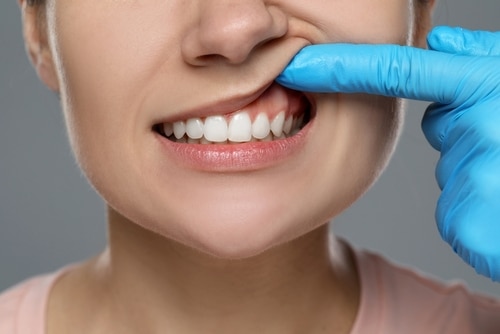For many who may not be aware of the signs or effects of gum disease, it may be helpful to consider the bark beetle. These small insects feed on the inner bark of trees, disrupting their ability to transport nutrients and water. This infestation weakens the tree, making it susceptible to diseases and other stressors, eventually leading to its decline or possibly death. The collective activity of bark beetles can devastate entire forests if the problem isn’t addressed.
Just as bark beetles compromise a tree’s health by disrupting its nutrient flow, unchecked bacteria in your mouth can cause gum disease. This leads to swollen, red, and bleeding gums. Left untreated, gum disease can advance and cause tooth loss.
While foresters work to control beetle infestations to protect forests, it’s vital to regularly monitor and maintain your oral health to prevent the onset and spread of gum disease. Diligent at-home hygiene is essential, as are regular dental cleanings.
Recognizing the Signs of Gum Disease
Gum disease, or periodontal disease, primarily develops due to bacterial growth within the mouth. Poor oral hygiene, like inadequate brushing and flossing, allows bacteria to accumulate, forming a sticky film called plaque along the gumline. When plaque isn’t adequately removed, it hardens into tartar. Tartar cannot be removed with standard hygiene practices.
Over time, the bacteria in plaque and tartar triggers inflammation, leading to gum irritation and swelling. This early stage of gum disease is called gingivitis. If left untreated, gingivitis progresses to periodontitis, where bacteria penetrate beneath the gums, destroying the tissues and bones that support the teeth.
Preventive steps, like brushing and flossing thoroughly and scheduling routine dental checkups, are vital. However, recognizing the symptoms of gum disease, like bleeding or tender gums, and taking prompt action can help prevent the condition from worsening.
The Causes of Gum Disease
Poor oral hygiene is a primary cause of gum disease. However, there are several other causes and risk factors, including:
- Smoking and tobacco use: Smoking impairs the body’s immune system, making it harder to fight off infections, including those affecting the gums.
- Genetics: Some individuals may be more genetically predisposed to gum issues. This might make some people more prone to gum inflammation and less capable of fighting oral infections.
- Hormonal changes or pregnancy: Increased hormone levels, like estrogen and progesterone, can make gums more sensitive to plaque, leading to a condition known as “pregnancy gingivitis.” Hormonal fluctuations can impact the body’s response to the bacteria in plaque, making pregnant women more susceptible.
- Medications: Some medications can reduce saliva production, resulting in a condition called dry mouth. Saliva is vital in washing away food particles and neutralizing acids produced by plaque. Therefore, a reduction in saliva can create a favorable environment for bacteria, elevating the risk of developing gum disease.
Good oral hygiene practices are a fundamental defense against gum disease, especially for individuals at risk of developing infections.

